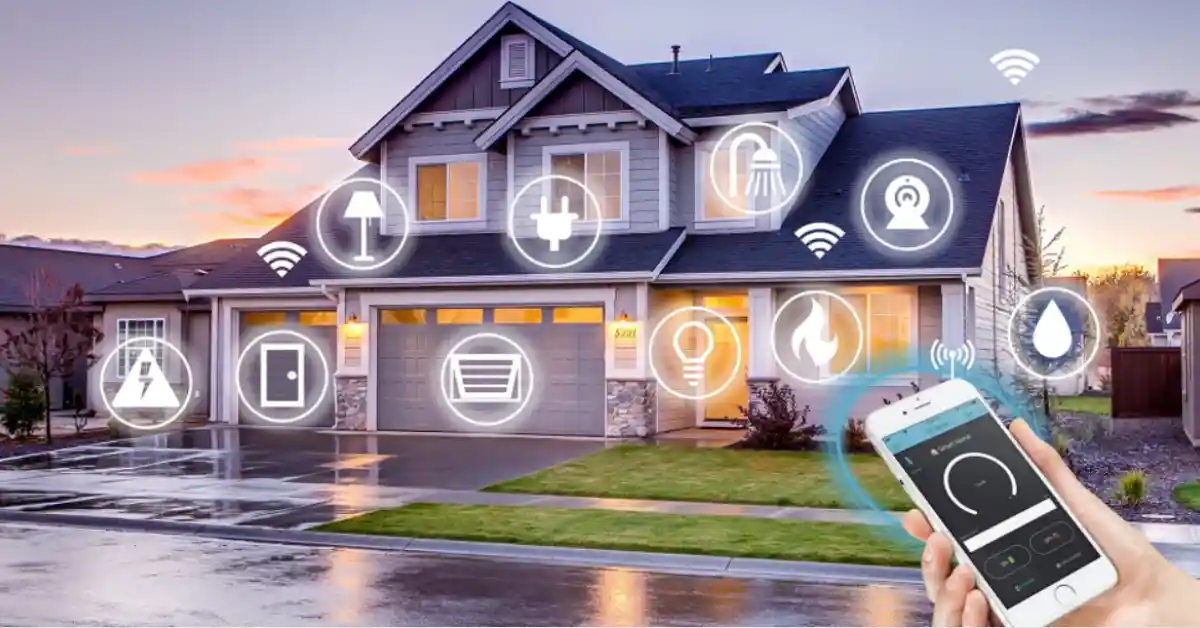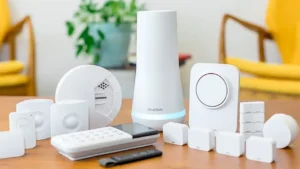Introduction: Why Smart Homes Change the Insurance Game
The rise of connected devices has transformed what it means to own a safe and efficient home. From smart locks and water leak detectors to AI-powered monitoring systems, these tools don’t just add convenience, they reshape the way insurers assess risk. In 2025, smart home insurance is no longer just a buzzword. It’s a major driver of premium discounts, claim reductions, and coverage innovations. But how much can you really save, and what do you need to know before relying on technology to protect your financial future?
What Is Smart Home Insurance? (Quick Answer)
Smart home insurance is a standard homeowners insurance policy that incorporates discounts, enhanced protections, or tailored endorsements for homes equipped with smart devices that reduce risks.
It isn’t a brand-new product category. Instead, insurers recognize that homes with leak sensors, security cameras, and monitored alarms are less likely to file costly claims, and they pass some of those savings on to you.
Why It Matters in 2025
Traditional risk factors, location, roof age, fire hazards, still matter. But smart devices now sit alongside those basics in underwriting decisions. Why? Because they directly prevent losses:
- Smart locks & monitored alarms: Reduce burglary risk.
- Leak detectors with auto shutoff valves: Prevent one of the costliest non-weather claims, water damage.
- Connected smoke & CO detectors: Alert both you and emergency services faster.
- 24/7 video monitoring: Provides indisputable evidence in liability or theft disputes.
Insurance companies are risk managers. The fewer claims they pay out, the more they’re willing to reward homeowners who adopt prevention-first technologies.
Cost Savings: How Smart Devices Affect Premiums
In 2025, most homeowners with smart devices can expect discounts in the 5–15% range. The exact savings depend on:
- Device type: Security systems and water leak prevention tools earn the highest discounts.
- Monitoring: Professionally monitored devices generally trigger bigger credits than self-monitored systems.
- Bundled systems: A full smart home package (security + leak detection + fire monitoring) may unlock premium bundles.
- Insurer policies: Some insurers, like State Farm or Allstate, have direct partnerships with device brands (e.g., ADT, Ring, SimpliSafe) to offer enhanced discounts.
Example: A $2,000 annual premium reduced by 10% saves $200 per year. Over 10 years, that’s $2,000 saved, often more than the cost of buying and maintaining the smart devices.
Coverage Enhancements With Smart Home Policies
Some insurers are going beyond discounts. They now provide expanded protections when you install smart devices. Examples include:
- Leak detection coverage: Waived deductibles if your leak sensor triggers and prevents major damage.
- Device replacement coverage: Policies that cover your smart device itself if damaged by a covered peril.
- Proactive claims assistance: Automatic alerts to insurers when a sensor trips, speeding up the claims process.
These new features align insurers’ interests with yours: preventing loss, not just paying after the fact.
Real-World Case Studies
- Water Damage Prevention in Texas (2024): A Houston family installed automatic shutoff valves connected to water sensors. When a pipe burst during a freeze, the system shut off water immediately. Losses were limited to $1,500 instead of an estimated $25,000. Their insurer rewarded them with a 12% discount at renewal.
- Burglary Deterrence in California (2023): A smart lock + camera combo captured an attempted break-in. Police responded before entry was made. Since no claim was filed, the homeowner avoided a surcharge and received ongoing premium credits for using the devices.
- Insurance-Device Partnership Savings (2025): Certain carriers now subsidize smart device purchases (offering $100–$200 discounts on devices like leak detectors) to encourage adoption and reduce claims.
Challenges and Limitations
Smart devices aren’t a silver bullet. Homeowners should be aware of:
- Data privacy concerns: Device data may be shared with insurers, raising questions about how it’s used.
- Power/internet outages: Devices only work with connectivity; backup plans matter.
- Upfront cost: Outfitting a full smart home can run $1,000–$3,000.
- Device maintenance: Batteries, software updates, and integration issues can limit effectiveness.
Still, the benefits often outweigh the costs, particularly when insurers help foot the bill through discounts.
Smart Devices That Deliver the Biggest Insurance Savings
If you’re prioritizing smart home purchases for insurance benefits, focus on:
- Smart security systems (Ring, SimpliSafe, ADT): Up to 10% savings.
- Leak sensors + auto shutoff (Phyn, Flo by Moen): Up to 12% savings.
- Monitored smoke/CO detectors (Nest Protect, First Alert): Up to 8% savings.
- Smart locks & video doorbells: Smaller discounts, but strong theft deterrents.
- Whole-home monitoring hubs: Help integrate all devices into one streamlined system.
Key Takeaways
- Smart home insurance = standard coverage + discounts or enhancements.
- Savings average 5–15%, especially for security and leak detection.
- Partnerships between insurers and device makers are growing in 2025.
- Real-world cases show that losses are reduced dramatically with the right devices.
- Upfront device costs are often offset by insurance discounts within a few years.




